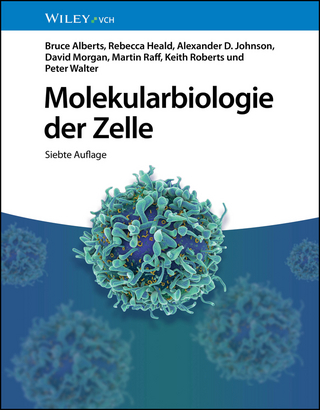
Cell Membranes
Kluwer Academic/Plenum Publishers (Verlag)
978-0-306-42620-9 (ISBN)
- Titel ist leider vergriffen;
keine Neuauflage - Artikel merken
This volume assembles reviews on topics in two major related areas. One of these concerns the interactions of cells with substrata and with other cells, which are mediated by the extracellular matrix and soluble molecules. As described in this volume, these interactions are responsible for controlling cell functions ranging from embryogenesis and neural development to blood clotting. More- over, important properties of the extracellular matrix can be modulated by the interdependent actions of tumor cells and fibroblasts. The other major area of interest concerns the response of cells to extracellular signals. Recent work has begun to reveal how a remarkable diversity of cellular functions, including neuronal, proliferative, membrane--cytoskeletal, and many other kinds of re- sponses, are elicited through the mediation of a relatively small and interdepen- dent set of second messenger systems. These include both changes in cytoplasmic ionic balances and activation of various kinds of protein kinases. Both subjects are covered in this volume. The two areas are linked by the common theme of cellular response to an external environment that is sensed through cellular interactions with informational molecules, which are soluble agents, as well as those that are components of insoluble matrices. It is only recently that we have come to appreciate the complex interplay between the matrix surrounding a cell and the cell's response to hormones and growth factors. Thus, we have tried to select examples in which this type of extracellular integration may playa role.
1 Regulation of Development by the Extracellular Matrix.- 1. Introduction.- 2. Molecular Analysis, Localization, and Functions of Cell-to-SubstrateAdhesion Molecules.- 2.1. Laminin.- 2.2. Fibronectin.- 3. Involvement of Cell—Substratum Adhesion Molecules in EmbryonicCell Migration.- 3.1. Gastrulation.- 3.2. Migration of Avian Neural Crest Cells.- 3.3. Migration of Primordial Germ Cells.- 3.4. Elongation of Neurites.- 4. Involvement of Cell—Substratum Adhesion Molecules in Tissue Remodeling.- 4.1. Dissociation of Epithelia.- 4.2. Formation of Epithelia.- 4.3. Remodeling of Epithelia.- 5. Concluding Remarks.- References.- 2 Thrombospondin: A Multifunctional Platelet and Extracellular Matrix Glycoprotein.- 1. Introduction.- 2. Structure and Molecular Interactions of Thrombospondin.- 2.1. Structure of Thrombospondin.- 2.2. Interactions with Ca2+, Heparin, and Other Proteins.- 2.3. Organization of Functional Domains.- 3. Roles for Thrombospondin in Platelet Function.- 4. Presence of Thrombospondin in Extracellular Matrices.- 4.1. Synthesis of Thrombospondin by Cells in Culture.- 4.2. Immunolocation of Thrombospondin in Tissues.- 5. Possible Functional Roles for Thrombospondin in the ExtracellularMatrix.- 5.1. Organizational and Other Roles.- 5.2. Evidence for an Involvement of Thrombospondin in CellProliferation.- 5.3. A Role for Thrombospondin in the Regulation of Proliferation ofVascular Smooth Muscle Cells.- 6. Synopsis.- References.- 3 Neuronal Antigens Involved in Cell Adhesion and Cell Recognition.- 1. Introduction.- 2. Identification of Neural Antigens Using Immunological Approaches.- 3. Role of Identified Antigens in Neuronal Cell Recognition.- 3.1. Cell Type-Specific Molecules.- 3.2. Monoclonal Antibodies as Probes for the Analysis of AxonalGuidance.- 3.3. Neural Cell Migration.- 4. Neuronal Cell-Adhesion Molecules.- 5. N-CAM.- 5.1. Chemistry of N-CAM.- 5.2. Biological Function of N-CAM.- 5.3. In Vivo Analysis of N-CAM Function.- 5.4. Role of Heparan Sulfate Proteoglycan in N-CAM function.- 6. Relationship of N-CAM to Other Neuronal Cell-Adhesion Molecules.- 7. Conclusions.- References.- 4 Mechanisms of ?1-Adrenergic and Related Responses: Roles ofCalcium, Phospoinositides, Guanine Nucleotides, Diacylglycerol,Calmodulin, and Changes in Protein Phosphorylation.- 1. Introduction.- 2. The ?1Adrenergic Receptor.- 3. Changes in Cell Ca2+ Induced by ?1Adrenergic Agonists.- 4. Role of Phosphoinositide Changes.- 5. Role of Guanine Nucleotide—Binding Regulatory Protein.- 6. Role of Myoinositol Trisphosphate and Ca2+ Release.- 7. Role of Diacylglycerol and Protein Kinase C.- 8. Role of Ca2+ -Calmodulin-Regulated Enzymes and Other Proteins.- 9. Summary.- References.- 5 Regulation of Protein Kinase C by Lipid Cofactors.- 1. Introduction.- 2. Activation of Protein Kinase C in Vivo by Diacylglycerols.- 2.1. Specific Phosphorylations and Inhibition of Phorbol EsterBinding.- 2.2. Platelets.- 2.3. Neutrophils.- 2.4. Other Release Reactions.- 2.5. Receptor Regulation.- 2.6. Proliferation, Differentiation, and Differentiated Functions.- 2.7. Interactions with Other Second Messenger Systems.- 2.8. Effects of Ion Conductance.- 2.9. Other Responses Elicited by Diacylglycerols.- 2.10. Effects of Phospholipase C Treatment.- 3. Activation of Protein Kinase C in Vitro.- 3.1. Activation by Lipids.- 3.2. Activation by Phorbol Diesters.- 4. Conclusions.- References.- 6 Protein Kinase C and Its Role in Cell Growth.- 1. Introduction.- 2. Protein Kinase C.- 2.1. The Enzyme.- 2.2. Inhibitors.- 2.3. Antibodies.- 2.4. Natural Agonists.- 2.5. Activation by Tumor Protomers.- 2.6. Read Protein Kinase C for Phorbol Ester Receptor.- 2.7. Subcellular Distribution of Protein Kinase C.- 2.8. Is M Kinase Involved in Signal Transduction?.- 2.9. Regulation of Protein Kinase C by Phosphorylation.- 2.10. Multiple Forms of Protein Kinase C.- 3. Identification of Substrates for Protein Kinase C.- 3.1. Receptor Substrates.- 3.2. Nonreceptor Substrates.- 3.3. Predicting Phosphorylation Sites for Protein Kinase C.- 4. Cellular Effects of Tumor Promoters.- 4.1. Carcinogenic Effects.- 4.2. Effects on Cell Differentiation.- 4.3. Mitogenic Effects.- 4.4. Effects on Gene Expression and Enzymatic Activities.- 4.5. Effects on Transport and Ion Fluxes.- 4.6. Effects on Cell Morphology.- 4.7. Effects on Secretion.- 4.8. Effects of Phorbol Esters in the Presence of Agonists.- 4.9. Can the Effects of Tumor Promoters on Cells Be Mimicked bySynthetic Diacylglycerols?.- 5. Interaction of Protein Kinase C with Other SignalingSystems.- 5.1. Interaction with the cAMP Pathway.- 5.2. Interactions between the Two Limbs of the PhosphatidylinositolTurnover Pathway.- 5.3. Interactions between Protein Kinase C and Protein—TyrosineKinases.- 6. Conclusions and Perspectives.- References.- 7 Modulation of the Extracellular Matrix by Tumor Cell—FibroblastInteractions.- 1. Introduction.- 2. Effect of Tumor Cell—Fibroblast Interactions on Production of Matrix-Degrading Enzymes.- 2.1. Type I Collagenase.- 2.2. Other Matrix-Degrading Enzymes.- 3. Effect of Tumor Cell—Fibroblast Interactions on Production ofExtracellular Macromolecules.- 3.1. Hyaluronate.- 3.2. Other Extracellular Macromolecules.- 4. Cell—Cell Interactions and Extracellular Matrix Modulation inEmbryonic Development, Tissue Regeneration, and Tumor Invasion.- References.- 8 Early Cytoplasmic Signals and Cytoskeletal Responses Initiated byGrowth Factors in Cultured Cells.- 1. Introduction.- 2. Ions as Signals.- 2.1. Ca2+.- 2.2. H+.- 3. Inositol Lipid Metabolites as Signals.- 4. cAMP as a Signal.- 5. Protein Phosphorylation as a Signal.- 6. Mechanisms of Desensitization to Growth Factor Stimulation.- 7. Cell Shape and Motility.- 8. Cytoskeleton.- 9. Phorbol Esters and the Cytoskeleton.- 10. Cytoplasmic pH and the Cytoskeleton.- 11. Model of the Role of the Ca2+ Signaling Pathway in Regulating theActin-Based Cytoskeleton.- 12. Prospectus.- References.
| Erscheint lt. Verlag | 31.12.1987 |
|---|---|
| Zusatzinfo | 432 p. |
| Verlagsort | New York |
| Sprache | englisch |
| Gewicht | 720 g |
| Themenwelt | Naturwissenschaften ► Biologie ► Biochemie |
| ISBN-10 | 0-306-42620-X / 030642620X |
| ISBN-13 | 978-0-306-42620-9 / 9780306426209 |
| Zustand | Neuware |
| Haben Sie eine Frage zum Produkt? |
aus dem Bereich


